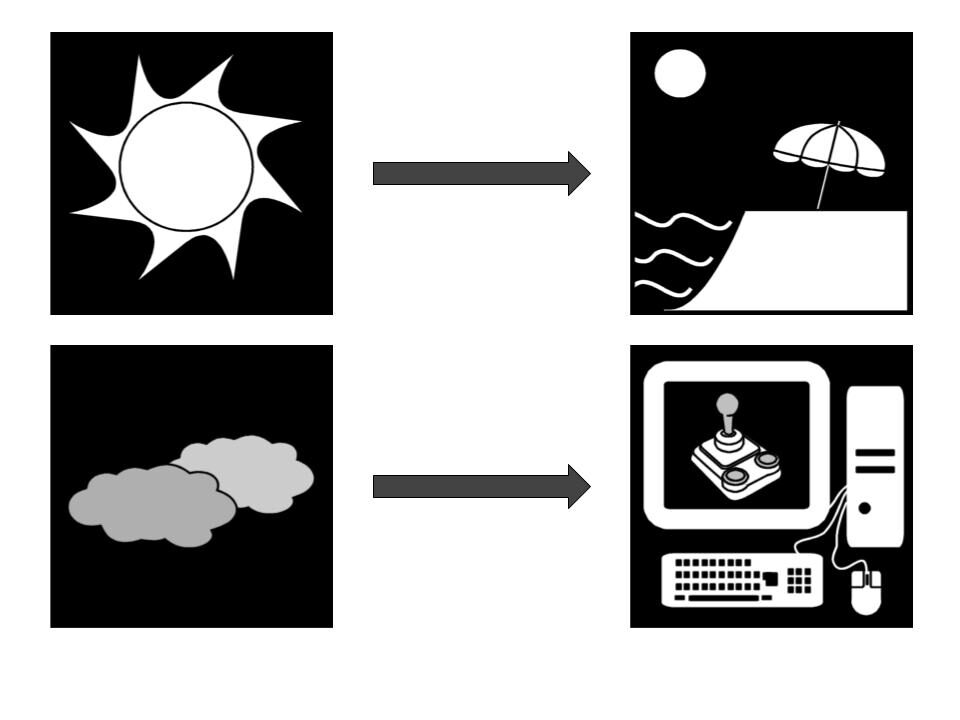theuninspirational
theuninspirational.
(Content note: This post mentions ABA briefly, and gives a detailed example of an autistic child being exposed to gaslighting.)
I’m an autistic parent to an autistic child. After I tweeted a bit about my take on autistic parenting, that made me think that I want to explain one of the benefits of using visual supports for clarifying life and create predictability.
Visual supports like picture schedules can be used in a number of ways. Sometimes people use them in ABA settings to visualize what reward the child will receive, and I want to be clear that I don’t do that. I don’t do any kind of ABA or therapy that attempts to make my kid appear allistic (non-autistic).
In my home, we use pictures and visual support to make life easier for us, as the autistic people we are. Nowadays, both my kid and I are mostly verbal but visual support is still a great way to communicate for us, for a number of reasons. One of the benefits of pictures, words written down, and color-coding is that this is the kind of information that lingers, meaning even for people like us who don’t always remember what we were thinking about a second ago (hey ADHD), the information is more accessible. Another benefit is that clear, visualized planning can prevent (unintentional) gaslighting and misunderstandings.
Now, some of you may think that since gaslighting is a horrible thing, it’s not something that happens accidentally. I wish that were true, because yes, making someone doubt themselves and their experience of reality is a truly horrible thing to do. In my experience though, adults sometimes do gaslight kids without even realizing it. Especially autistic kids. Especially if parents operate with an allistic perspective. It can go something like this:
An autistic child is being told by a parent that “tomorrow, we’re going to the beach if the weather is good.” If the weather is bad they will stay at home and play computer games. In the mind of the parent, this plan means that they will go to the beach if it’s warm and sunny.
This condition doesn’t have to be a problem, but let’s say that the parent doesn’t tell the kid about what they mean by “good weather.” Let’s say that the kid doesn’t even like sunshine because the heat is sensory hell, but loves playing on the beach on a cloudy day. The next day when they wake up, it’s cloudy and not that warm. The kid is happy, because the weather is perfect for the beach. The parent however, doesn’t want to go to the beach because it isn’t warm enough. Maybe they will disagree and fight about it. Maybe, the parent will say something like “But I told you we’re only going if the weather is nice! Why don’t you ever listen?”
A lot of people will probably agree with me that this is a misunderstanding. However, if you’re an autistic kid your sensory experiences, your interpretations of the world, and what people say are likely to always be questioned, erased, and invalidated—and then you are being blamed for it. It probably doesn’t happen only once a year, it might happen every day. Because that’s life for a lot of autistic people in an allistic-run world.
For kids, this is even worse than for adults because kids’ interpretations are often considered invalid just for coming from a kid. Having your interpretations of the world constantly invalidated day after day, year after year, is a kind of gaslighting. It might not be intentional but it’s more harmful than just misunderstandings between equals.
So how can visual supports help autistic people in these situations?
Let’s say that the parent and kid in our example had made a picture schedule about this. For some people, it becomes much easier to understand an autistic way of thinking when you communicate using pictures, meaning that just putting what you want to say in pictures might close a communication gap between the parent and the kid.
But even if closing that gap doesn’t happen automatically, when the parent and kid created the schedule together, the question of what “good weather” is would hopefully had come up. Many of the parents I discuss visual supports with mention this idea, that putting your thoughts into pictures makes it more necessary to be precise and see possible interpretations beyond your own. When visualizing plans together, it can become easier to understand each other.
Hopefully, by making visualizations and realizing that you have different sensory experiences about sun and heat and therefore interpret “good weather” differently, you avoid misunderstandings and gaslighting.
 |
| [image: Black and white pictures of a sun followed by an arrow pointing
at a symbol for computer games and clouds followed by an arrow pointing at the symbol beach. Images from Sclera symbols.] |
Now, would it be enough to visualize during what weather a visit to the beach could happen? No. If a kid experiences sensory hell from sunshine and heat, the issue won’t be solved just because there’s predictability from a picture schedule. Obviously the parent has to change their idea of what kind of weather that is beach appropriate to not put their kid in sensory hell.
Creating predictability by using visual support isn’t some kind of magic, it’s only one part of parenting an autistic kid in a respectful way.
